#The Road to Mecca
Text

see the play.
#the road to mecca#athol fugard#timothy near#theater#play#wendy vanden heuvel#caspar newbolt#version industries
2 notes
·
View notes
Text

3 notes
·
View notes
Text
That inexplicable urge to ride my horse along the silk road, stopping and admiring all of the beautiful cultures and Islamic architecture on the way to my pilgrimage to Mecca
#simpler times#i also just really like horses#muslim#mecca#saudi arabia#Uzbekistan#tajikistan#persia#islam#silk road#history
3 notes
·
View notes
Text
You know when you find a book, and everyone in it is just like: oh yeah, those to? Best friends. Gal Pals. Besties.
The two gals in question: "You're more important to me than anyone"
"no man will measure up to the connection We have"
Direct Quote:
"Nobody before you, or since, has done that to me. [...] You see, when I lit the candles, you were going to see all of me. I don't mean my face, or the clothes I was wearing--I mean the real me, because that's what this room is...and I desperately oh, so desperately, wanted you to like what you saw."
3 notes
·
View notes
Text

Stickers, iPhone + Samsung Cases, Laptop Sleeves, Canvas, Metal and Framed Prints, Pillows, Mugs, Totes, Backpacks, Clothing, and Pet Accessories
#cape cod#massachusetts#pride flag#queer pride#lgbt pride#trans pride#gay pride#wigoutlet#capecod#queer community#Gay Mecca#roadsigns#road trip
0 notes
Video
youtube
Kabootar Chowk in Makkah | Beautiful Mecca walking tour | Makkah kabutar...
#youtube#Explore the vibrant heart of Makkah at Kabootar Chowk! 🕊️ Stroll through the iconic Ibrahim Khalil Road and soak in the beauty of Mecca on
0 notes
Text
ARCHAEONEWS / 400-years-old Magical Artifacts Discovered along the Route from Egypt to Mecca
#ARCHAEOLOGY #NEWS
400-years-old Magical Artifacts Discovered along the Route from Egypt to Mecca
This discovery reveals how people in the Early Ottoman Period consulted popular sorcerers, alongside the formal belief in the official religion
#magic
Clay female figurine. Photo Clara Amit, Israel Antiquities Authority
On the road to Mecca in Saudi Arabia, one could stop at a professional sorcerer: it seems that Muslim pilgrims en route from Cairo in Egypt to Mecca in the Arabian Peninsula, about four centuries ago, would make a stop at these professional sorcerers. A research recently published in the Journal of Material Cultures in the…

View On WordPress
#archaeology#Cairo#Egypt#excavations#Israel#Israel Antiquities Authority#Journal of Material Cultures in the Muslim World#magic#Mecca#muslim#Pilgrimage Road#pilgrims#research#Saudi Arabia
0 notes
Photo

Ein Khudra - a beautiful oasis within a few kilometres of the main Nueiba-Dahab road, once an important stopping place on the much travelled pilgrim’s route to Mecca.
0 notes
Text
سعودی وزارت داخلہ کا 5 ممالک میں ’روڈ ٹو مکہ‘ پروگرام کا آغاز
سعودی وزارت داخلہ کا 5 ممالک میں ’روڈ ٹو مکہ‘ پروگرام کا آغاز
سعودی وزارت داخلہ کا 5 ممالک میں ’روڈ ٹو مکہ‘ پروگرام کا آغاز
ریاض، 5 جون ( آئی این ایس انڈیا)
سعودی عرب کی وزارت داخلہ نے ’روڈ ٹو مکہ‘ اقدام کا باقاعدہ آغاز کردیا ہے۔ اس پروگرام میں ابتدائی طور پر پاکستان، انڈونیشیا،ملیشیا، مراکش اور بنگلہ دیش شامل ہیں۔یہ پروگرام سعودی عرب کے وسیع تر اصلاحات اور ترقی کی علامت سمجھے جانے والے وژن2030 کا حصہ ہے۔سعودی عرب کی وزارت داخلہ نے ایک بیان میں کہا کہ…

View On WordPress
0 notes
Text
best books of 2022 rec list:
fiction:
chouette by claire oshetsky
forty thousand in gehenna by cj cherryh
fierce femmes and notorious liars by kai cheng thom
sula by toni morrison
everyone in this room will someday be dead by emily r. austin
jane eyre by charlotte bronte
villette by charlotte bronte
non-fiction:
gay spirit by mark thompson
we too: stories on sex work and survival by natalie west
transgender history by susan stryker
blood marriage wine & glitter by s bear bergman
love and rage: the path to liberation through anger by lama rod owens
gay soul by mark thompson
between certain death and a possible future: queer writing on growing up in the AIDS crisis by mattilda bernstein sycamore
the man they wanted me to be: toxic masculinity and a crisis of our own making by jared yates sexton
nobody passes: rejecting the rules of gender and conformity by mattilda bernstein sycamore
cruising: an intimate history of a radical pastime by alex espinoza
gay body by mark thompson
what my bones know: a memoir of healing from complex trauma by stephanie foo
the child catchers: rescue, trafficking, and the new gospel of adoption by kathryn joyce
the opium wars: the addiction of one empire and the corruption of another by w. travis hanes III
a queer history of the united states by michael bronski
the trouble with white women by kyla schuller
what we don't talk about when we talk about fat by aubrey gordon
the feminist porn book by tristan taormino
administrations of lunacy: a story of racism and psychiatry at the midgeville asylum by mab segrest
the women's house of detention by hugh ryan
angela davis: an autobiography by angela davis
ten steps to nanette by hannah gadsby
neuroqueer heresies by nick walker
the remedy: queer and trans voices on health and healthcare by zena sharman
brilliant imperfection by eli clare
the dawn of everything: a new history of humanity by david graeber and david wengrow
tomorrow sex will be good again by katherine angel
all our trials: prisons, policing, and the feminist fight to end violence by emily l. thuma
if this is a man by primo levi
bi any other name: bisexual people speak out by lorraine hutchins
white rage: the unspoken truth of our racial divide by carol anderson
public sex: the culture of radical sex by pat califa
I'm glad my mom died by jenette mccurdy
care of: letters, connections and cures by ivan coyote
the gentrification of the mind: witness to a lost imagination by sarah schulman
skid road: on the frontier of health and homelessness in an american city, by josephine ensign
the origins of totalitarianism by hannah arendt
nice racism: how progressive white people perpetuate racial harm by robin diangelo
corrections in ink by keri blakinger
sexed up: how society sexualizes us and how we can fight back by julia serano
smash the church, smash the state! the early years of gay liberation by tommi avicolli mecca
no more police: a case for abolition by mariame kaba
until we reckon: violence, mass incarceration, and a road to repair by danielle sered
the care we dream of: liberatory & transformative justice approaches to LGBTQ+ health by zena sharman
reclaiming two-spirits: sexuality, spiritual renewal and sovereignty in native america by gregory d. smithers
the sentences that create us: crafting a writer's life in prison by Caits Messner
578 notes
·
View notes
Text
Allah's help arrives in ways we cannot imagine. When facing difficulties and seeking His assistance, we must understand that He not only sends aid but does so in ways that may surprise us. For example, Prophet Nuh (peace be upon him) preached Islam for 900 years, and when Allah's help came, it manifested as an unexpected storm, requiring Nuh to build a boat and leave, even without his family.
Similarly, when Allah aided Prophet Ibrahim (peace be upon him), it was through the challenge of fire. Lut (peace be upon him) sought Allah's help, and it arrived in a way that resulted in the destruction of the entire disbelieving community, including his wife. The pattern is evident: Allah's help doesn't always mean a smooth path; it can come in the form of storms, fire, or migration—what may initially seem like a tragedy becomes a source of divine assistance.
Even Prophet Muhammad (peace be upon him) had to leave his hometown for Madinah, rather than finding peaceful acceptance in Mecca. The pattern persists—Allah doesn't necessarily make the road easy; instead, help often emerges from hardship. So, before things become easy, they may get harder, and it's through such challenges that divine assistance unfolds.
19 notes
·
View notes
Text

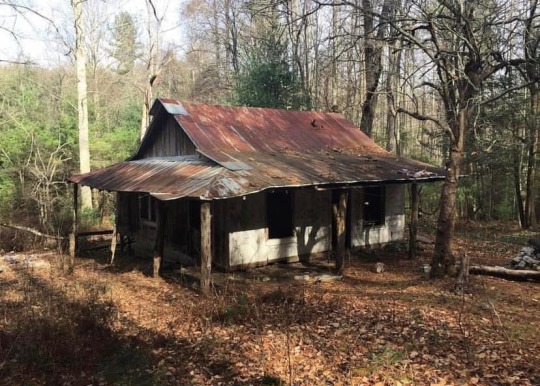



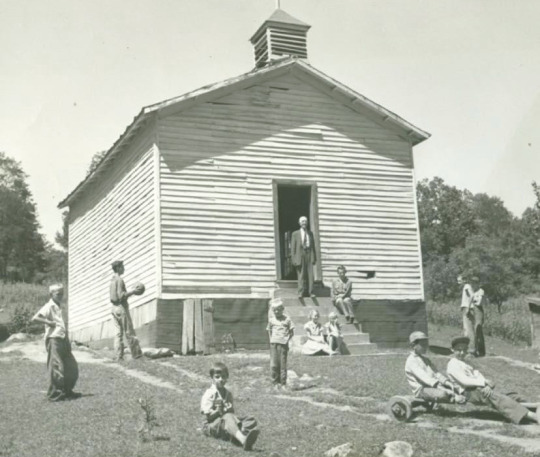


The Ghost Town of Lost Cove:
Lost Cove is located in Yancey County, North Carolina. What once was a thriving mecca for moonshine and timber, Lost Cove is now a ghost town deep in the Pisgah National Forest. Lost Cove was the home to a small community of people from the mid 1800's to the 1950's and it is estimated that around 100 people used to call this town home. Now, all that remains are abandoned homes, rusted cars, crumbling rock walls, and the tombstones of former residents from over a century ago.
What Happened:
In the late 19th and early 20th century the town prospered from farming and logging operations. This brought the railroad into the Blue Ridge community, and with it, more residents. During prohibition the area became a haven for moonshine producers. Due to it’s proximity along the North Carolina and Tennessee border, local law officials couldn’t agree on who had jurisdiction to police the area, which emboldened moonshiners to move to the region for production.
Eventually the timber from logging operations ran low, which led to the decision to halt the railroad service that brought passenger trains through the area. Despite a wagon road, a proper road was never built, and the loss of train service isolated the town residents making it difficult to receive supplies. All of that, combined with the area’s rough terrain, led to a gradual departure of residents until the last known family left in 1957.
Many of the structures that were left behind were consumed by a fire in 2007. However all was not lost (pardon the pun), and adventurous hikers can still find the ruins tucked deep in the forest. You can visit the remains, but only by hiking into the area. There are a couple of ways into the cove, but each requires a full day of in-and-out hiking. The slope can be rather steep in some areas as well so expect dramatic elevation changes
Getting here is a journey in itself. There's two main routes to Lost Cove. The easiest route is the Lost Cove Trail which you'll find from an unlabeled trailhead off Forest Service Road 278. The 2.5-mile trek starts with ascending two miles up a gravel road then leading down Flattop Mountain, eventually ending at Lost Cove. Once here, you can explore the many abandoned buildings, cars, even a small cemetery situated on top of a hill. All places here once breathed with life and although the last remaining resident didn't leave until 1957, it feels as if it's been abandoned for hundreds of years.
•Learn more at https://www.brendajwiley.com/lost_cove.html
•https://www.fs.usda.gov/recarea/nfsnc/recarea/?recid=48550
•https://www.appalachianhistory.net/2021/04/the-vanished-community-of-lost-cove.html
(From Wikipedia and Onlyinyourstate)
#appalachian#appalachian mountains#north carolina#appalachian culture#appalachia#western north carolina#the south#nc mountains#ghost town
30 notes
·
View notes
Text

New post: "EDDIE REDMAYNE & GAYLE RANKIN BRING AUDIENCES INTO THE KIT KAT CLUB"
FRANK DILELLA | FEBRUARY 6, 2024.
Starting April 1, a hearty “Willkommen” awaits at the enticing and electrifying Kit Kat Club (a.k.a., the August Wilson Theatre) on 52nd Street on Broadway. The London transfer of the 2022 Olivier Award–winning revival of Cabaret is one of the most highly anticipated musicals of the spring season. Tony-winning actor Eddie Redmayne is set to reprise his performance of the Emcee, a role he won an Olivier for when he opened the show in the West End. He’ll be joined by actress Gayle Rankin, who is new to this production of Cabaret, taking on the show’s leading lady, Sally Bowles. Entertainment journalist for Spectrum News NY1 Frank DiLella caught up with both Redmayne and Rankin to talk their love of Cabaret and much more.
Eddie, congratulations on the Broadway transfer of this brilliant revival. How are you feeling knowing you’re once again taking on the Emcee in Cabaret?
EDDIE REDMAYNE: Thanks so much. Honestly, this is one of the pieces that made me fall in love with theater as a kid, so the fact that I got to play this iconic part on stage professionally in London was truly a bucket-list moment fulfilled. But when I was about 9 or 10, I became oddly obsessed with New York. London was home, but I was always looking at photographs of New York, researching the place. When I eventually came to the city and went to Times Square, it was one of those completely overwhelming sensations. I remember my whole body reacting. So the idea that I now get the chance to play this part in this show that I’m so passionate about in the mecca of musical theater — which is Broadway — is beautifully daunting and also 100 percent thrilling!
Gayle, Cabaret seems to be your show. You were part of the 2014 Roundabout revival with Alan Cumming — you played Fraulein Kost.
GAYLE RANKIN: I can’t tell you how moving it is to have worked on Cabaret a decade ago, and after lovingly letting it go, it’s come back to me with the gargantuan gift of Sally. [Laughs.] It is my show! I feel wildly privileged to be able to say that. I know I have to continue to earn that privilege because of what the show is and what it means. But I have never felt more ready to do that now, inside of this amazing production and with this incredible group of artists.
Eddie, when were you first introduced to Cabaret?
ER: I was first introduced to it when I was in school; I was around 15 or 16, and there was a little production being done at my school. And that was the first time I listened to the music. I remember hunting down all the possible CD versions I could find. I remember looking for a production to see, but there were none playing in London, so the very first production I ever saw of Cabaret was, randomly, the Spanish version in Madrid — and it was the Sam Mendes version, but in Spanish! I was 19 and completely blown away. Since then, I saw Emma Stone and Alan Cumming do it brilliantly in New York, and of course Rufus Norris’s version in London. I’m a sort of Cabaret junkie.
How about you, Gayle?
GR: The first time I was introduced to it was when I was in a musical-theater program in Scotland and one of the other young women had been given the song “Maybe This Time,” and I remember being like, “Wow! What a song!” That’s when I was introduced to Cabaret as a property.
Eddie, it’s my understanding that you were instrumental with making this production of Cabaret take shape.
ER: Ha! It’s been a long old road. After I did Cabaret in school in my late teens, there was an amateur production of Cabaret going to the Edinburgh Festival, and I got cast in that, and the venue that we were doing the show in was called The Underbelly. It was dark and damp and people were sitting around tables. I loved every minute, and it affirmed my want to be an actor. The guys who set up that venue became producers professionally and the Underbelly transformed to become a brilliant venue and producing house in the U.K. They approached me about seven years ago and asked if I would ever consider doing Cabaret again. It had always been on my bucket list, and I thought long and hard about it — as I said, it’s dream territory. Then Jessie Buckley leapt into my mind, who is an extraordinary actor and singer, and she and I plotted together. We both approached the brilliant director Rebecca Frecknall, and piece by piece this thing built momentum. But it had been done so beautifully and vividly before, we only wanted to do it if we could find a new way in, something that perhaps hadn’t been explored before. And with Rebecca, the brilliant Tom Scutt, Julia Cheng, and Jordan Fein — our designer, choreographer, and prologue director — we took on this idea of inviting an audience through the underbelly of the theatre, taking them through this experience so by the time they arrive in the theatre, they’ve truly left all their troubles outside.
Eddie, you’re taking on one of the great roles of the musical theater, the Emcee, and I have to say, having seen you on stage in London, your Emcee is different compared to Joel Grey’s and Alan Cumming’s.
ER: I think one of the reasons he’s such an appealing part is because he’s one of the most enigmatic parts that I’ve ever read, witnessed, or experienced. The Emcee was a part that was created by Joel and Hal Prince [director of the original Cabaret] to join scenes together. He has no literary basis. So in some ways, the part exists in an abstract way. One of the things that I tried to do when I first started was I attempted to rationalize him and create a backstory. But the second you try to pin him down, he falls flat — he’s too quixotic for that. In the end it became trying to find a way into him physically and through instinct alone. It felt like a high-wire act. But a thrilling one.
Gayle, Sally Bowles is one of the great female roles in musical theater. Who is your Sally?
GR: My Sally is close to me. I think she’s only to be known truly by me. Sally can infamously live in a space where she can be pitied to people, and I don’t think that’s the whole story. There’s more to be told about her. And I feel compelled to take that on.
Do you feel that your experience of doing the 2014 Cabaret revival with Alan Cumming, where you played a Kit Kat Club girl and Fraulein Kost, prepped you for Sally?
GR: How could it not? For something to live inside of you both consciously and unconsciously — I hope I’ve evolved as a person and as an artist, and I feel like I’ve never been more ready to take Sally on. And I feel like I’m a big enough girl to admit the 2014 production — I was not in a place or was the right person to play Sally even though I had the time of my life with that show.
Sally gets some amazing musical moments. “Maybe This Time,” “Cabaret,” “Don’t Tell Mama” … Favorite tune in the show?
GR: It’s always been “I Don’t Care Much” [sung by the Emcee]. Sally’s songs are almost too meaningful; I can’t pick one, they’re like children. [Laughs.] But there’s something about “I Don’t Care Much” that’s so essential to the conversation and the story and lives inside of all those characters. This longing for hope during so much horror. That song just moves me.
Gayle, take me to your opening night, when you take your bow as Sally Bowles.
GR: [Laughs.] Frank! What a question. Now I’m crying. My niece will be there, and she’s 12, and I’ll probably be looking at her. I’ll probably be tired. [Laughs.] I think I’m going to be really happy.
This show is quite the experience. Give a little preview of what New York audiences can expect once they enter the Kit Kat Club.
ER: I can’t paint that picture for you just yet because it’s in the process of being built and designed by Tom Scutt. Tom Scutt is one of the most thrilling creative minds I’ve had the privilege to work with. What his plans are for New York are completely captivating. The idea is that you’re brought in as an audience not through the conventional way of the theatre — you’re met by an entire prologue cast of dancers and musicians. You are submerged into the world of Cabaret from the second you pass the threshold. For me, I hope it makes the experience — you will feel like you’re part of an all-consuming event. You will also get to witness Gayle’s Sally — Gayle is a volcano of talent — Bebe Neuwirth’s Fraulein Schneider, Ato Blankson-Wood’s Cliff, Steven Skybell’s Schultz. A staggering ensemble — the list goes on. So many exciting things.
Eddie, you’re following in the footsteps of two celebrated actors who played the role of the Emcee: Joel Grey and Alan Cumming. Any interaction with them?
ER: I haven’t with Alan since I’ve played it. I met Alan in Los Angeles years ago and he’s just an extraordinary talent. Joel, I had never met, but then I got through the first act of Cabaret on opening night in London, and at the interval some flowers arrived and I opened the card and it was from Joel Grey. And in the midst of our opening night show, opening his generous card was one of the great moments.
I was so haunted by this production when I saw it in London. The time feels right to see and experience Cabaret.
ER: There is something so searingly relevant with this piece. And I feel like whenever Cabaret is being done, it’s relevant. But with what’s going on in the world today, I feel like it’s a cautionary tale — it sings loudly and clear and it’s this idea of the fear of the other. The political gain of “othering” people. And that constant repetition of scapegoating and hatred is what we’re seeing in our politics now.
GR: I’m not sure what John Kander and Fred Ebb and Joe Masteroff were channeling when they were writing this — they were able to tap into something that’s so cyclical. And as a humanity, I think we all hope that Cabaret becomes not as relevant as it is.
---
14 notes
·
View notes
Text
Cincinnati Surrendered To The Automobile When Jaywalking Was Outlawed
How many Cincinnatians subscribed to Popular Mechanics magazine in 1912? And how many of those subscribers recognized, in the September issue, a tiny article on Page 414 that laid out the future of the Queen City? It all seemed so innocent:
“The city pedestrian who cares not for traffic regulations at street corners, but strays all over the street, crossing in the middle of the block, or attempting to save time by choosing a diagonal route across a street intersection instead of adhering to the regular crossing, is designated as a ‘jay walker’ in Kansas City. Kansas City recently adopted a new ordinance for the control of foot traffic as well as vehicles, and ‘jay walking’ is to be prevented as rigidly as ‘jay driving.’”
That squib appeared adjacent to another brief item on how the brand-new town of Speedway, Indiana allowed only motorized vehicles on its streets, banning anything pulled by horses. In combination, the two articles sounded the death knell for a way of life that had existed for millennia.
Look at the illustrations that grace the old books about Cincinnati. There is no such thing as jaywalking. The streets were owned and enjoyed by the people. Pedestrians share the road with wheeled vehicles, crossing wherever convenient, even stopping in the middle of the street to chat. Horse-drawn carriages and wagons hauled passengers and freight. Men pulling handcarts and pushing wheelbarrows dodge the throng. The only motorized vehicles were the electric street cars, and they were confined to their tracks.
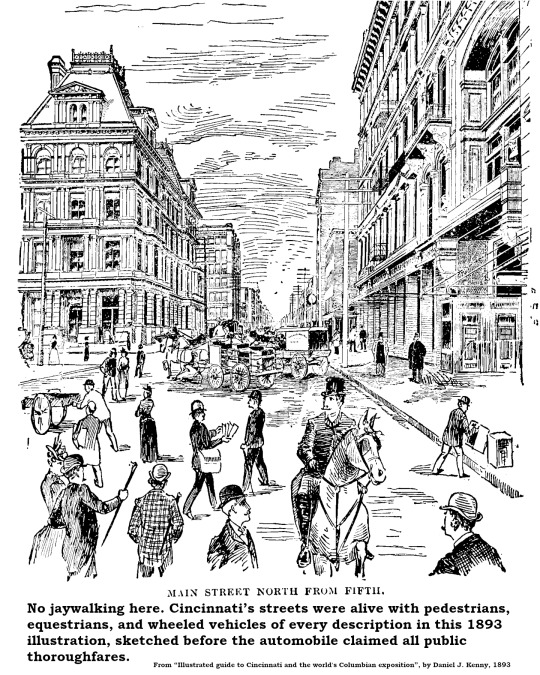
During election season, Cincinnati’s streets filled with torchlit political parades. On at least one occasion, a parade filled Vine Street from Fourth Street to McMicken with chanting men waving flaming brands, lighting the clouds above with a rosy glow. When any dignitary showed up in town, they were expected to speechify from their hotel balcony and people thronged the street below, halting traffic as they cheered. People crossing the street from any direction weren’t “jay walking.” They were just “walking.” The automobile changed all that.
Horse-drawn vehicles and electric streetcars killed a fair number of people, but the motor car quickly notched more than a hundred fatalities and many more injuries every year. Local media often blamed the victims. The Cincinnati Post [8 January 1916] piled on:
“Fourth-st. is the mecca of Cincinnati’s jay walkers. Most of the jay-walking is done between Vine and Race-sts. The other day we counted 20 persons crossing the street at different points at one time – and none was using a cross-walk. Fortunately accidents are rare on this street because of the extreme care exercised by autoists.”
It appears not to have occurred to the writer that this behavior, just five years previous, would have been considered normal.

The hammer landed in 1917. Cincinnati joined the ranks of other auto-infested cities that criminalized jaywalking. The new law went into effect in May of that year, restricting automobiles to no more than 8 miles per hour in the business district and 15 miles per hour in residential districts. For the first time, pedestrians were restricted to sidewalks and crosswalks. Pedestrians – literally – fought the new law. According to the Post [23 May 1917]:
“Theodore Mitchell, 38, agent, 631 Maple-av, is the first person to be arrested on a charge of jay-walking since the new traffic ordinance went into effect. Traffic Patrolman [Edward] Schraffenberger charged Mitchell attempting to make a short cut at Fifth and Walnut streets. When reminded of his mistake, Mitchell became angry, Schraffenberger said. Mitchell, charged with disorderly conduct and violating the traffic ordinance, was cited to appear in court Thursday.”
If you’d asked the cops, however, they would unanimously aver that the chief violators were women. The Post [21 May 1917] quoted Police Lieutenant Charles Wolsefer:
“The women are awful. They just don’t pay any attention at all. Just take a look at them crossing on Race-st.”
The reporter did so, and counted 48 jaywalkers, of whom 37 were women. A few days later, another Post reporter followed another policeman on patrol who confronted 25 jaywalkers, of which only two were men.
Among the first arrested was Miss Ella Bright of 538 Howell Avenue, Clifton, a teacher at Woodward High School. Miss Bright did not care for the attitude of the city policeman who accosted her. According to the Cincinnati Enquirer [7 June 1917]:
“She declared she had been upbraided unduly by an officer because she crossed the street in a manner which was a violation of the traffic laws after alighting from a street car.”
In August of that year, Mrs. John Mongan, 4217 Glenway Avenue, Price Hill, was arrested for striking a police officer who grabbed her arm as she executed a “Dutch Cut” (diagonal jaywalking) across the intersection at Sixth & Race.
Former U.S. President William Howard Taft, then on the law faculty at Yale, was visiting his hometown that year and blithely jogged across Sixth Street near Main, only to be corralled by Officer Joseph Schindler, who gave the law professor a little legal lesson.
The Post even enlisted its “boy reporter,” 12-year-old Freddy Printz, to test the city’s ability to enforce the new jaywalking regulations. On 7 July 1917, Freddy reported his fruitless attempts to get bawled out by a police officer. Despite blatantly jaywalking at five different locations, he only earned a polite reprimand from one officer.
While the local constabulary was doing their best to enforce the new laws, the automobiles were merciless. On 21 May 1918, the Post reported on the 25th traffic fatality of the year. The victim, a 12-year-old girl, was the twelfth child killed by an automobile that year.
Curiously, although Cincinnati outlawed jaywalking, the city had omitted one very important detail that might have contributed to compliance with the new law. A letter signed only “Chicagoan” appeared in the Post on 13 June 1917. The writer suggested that, like other cities attempting to get pedestrians to cross at intersections, Cincinnati should assist pedestrians by painting white lines on the street to mark approved pedestrian crossing paths. Cincinnati’s mandatory crosswalks were unmarked!

8 notes
·
View notes
Text
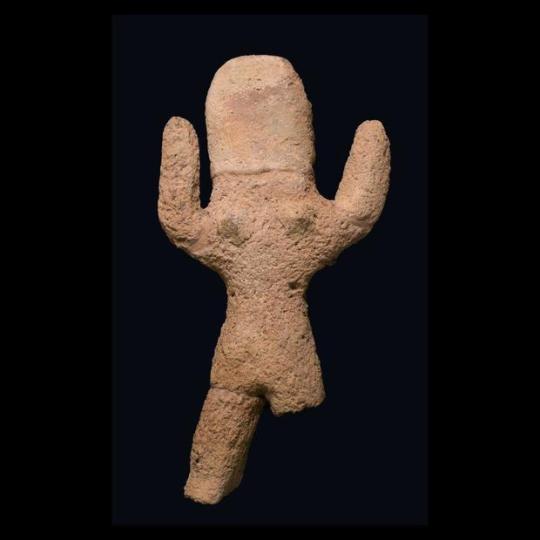
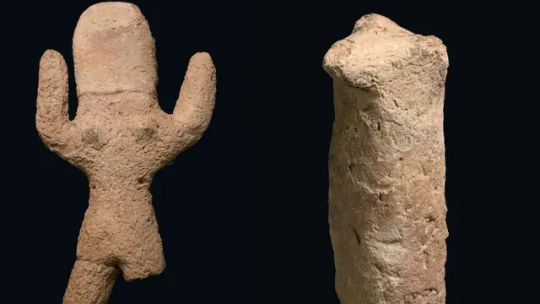

Artifacts Found in Israel were used by "Sorcerers" in "Magical Rituals" 4 Centuries Ago
Israeli researchers have uncovered artifacts that "professional sorcerers" used in "magical rituals" hundreds of years ago, the Israel Antiquities Authority said in a news release.
The professional sorcerers would have been visited by Muslim pilgrims traveling from Cairo in Egypt to the city of Mecca in the Arabian Peninsula. The rituals would include attempts to ward off the "evil eye," heal diseases and more. The three researchers on the project said in a joint statement that the discovery shows that "people in the Early Ottoman Period — just as today — consulted popular sorcerers, alongside the formal belief in the official religion."
"This is the first time that such a large assemblage of ritual objects of this kind has been found," the researchers — Itamar Taxel of the Israel Antiquities Authority, Uzi Avner of the Dead Sea-Arava Science Center and Nitzan Amitai-Preiss of the Hebrew University of Jerusalem — said in the news release.

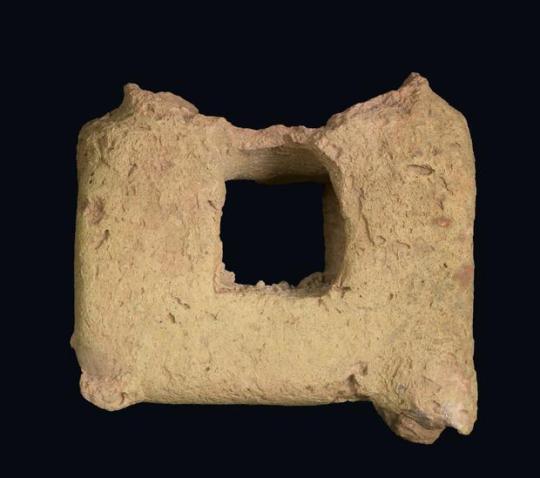
The artifacts were discovered in the late 1990s, at an archaeological site in Southern Israel's Eilat Hills. The finds included "dozens of fragments of clay globular rattles, mostly like table tennis balls, containing small stones, that sound when the rattle was shaken" and "two artifacts like miniature votive incense altars, a small figurine of a naked woman or a goddess with raised hands, a characteristic feature of deities or priests, a few other figurines, and colored quartz pebbles." The items were found broken, which the researchers said might have been intentional and done during the ritual ceremonies. An analysis of the clay the items were made of showed that they came from Egypt.
The artifacts were found along the Pilgrimage Road, also known in Arabic as the Darb al-Hajj, which ran from Cairo to the Arabian Peninsula. Camping sites and structures have also been found along the route in the same area the artifacts were found. Researchers believe these areas began to be used in the thirteenth or fourteenth centuries.
"The find-spot of these artifacts next to the camping site, and the comparison of the artifacts to those known in the Muslim world, as well as the fact that these artifacts were found together as a group, lead to the understanding that they were used in magical rituals," the researchers said. "It seems that these rituals were carried out at the site by one or several people who specialized in popular magical ceremonies."
By Kerry Breen.
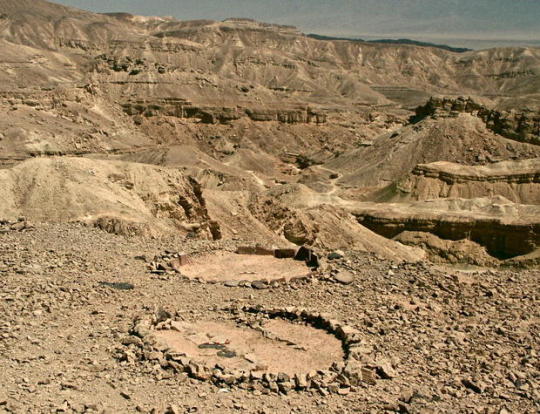

#Artifacts Found in Israel were used by “Sorcerers” in “Magical Rituals” 4 Centuries Ago#Arabian Peninsula#Early Ottoman Period#Eilat Hills#Pilgrimage Road#evil eye#black magic#ancient artifacts#archeology#archeolgst#history#history news#ancient history#ancient culture#ancient civilizations#ancient israel#israeli history
23 notes
·
View notes
Text
Finds in southern Israel's Eilat region show a blend of religion and mysticism. Artifacts from 400 years ago hint at magical rituals on the Pilgrimage Road to Mecca.
21 notes
·
View notes